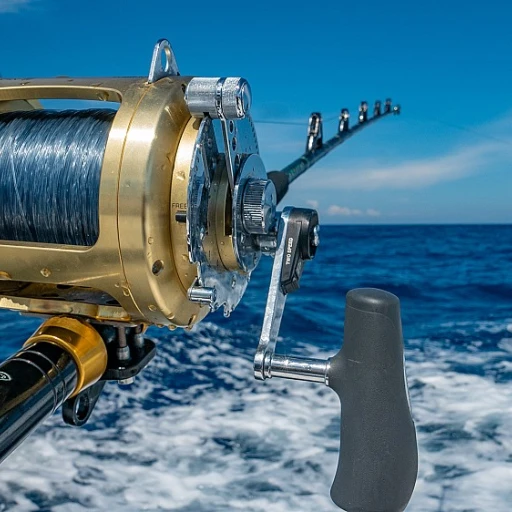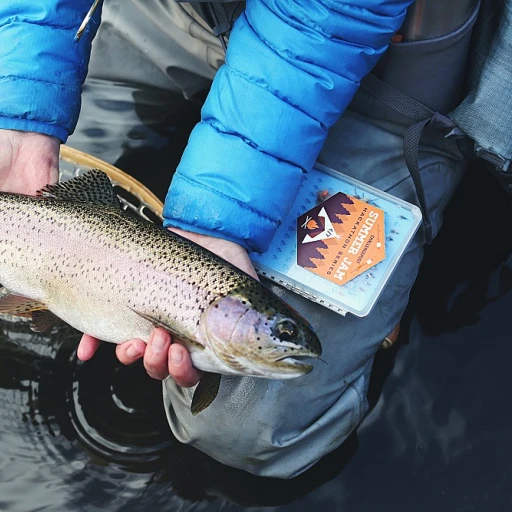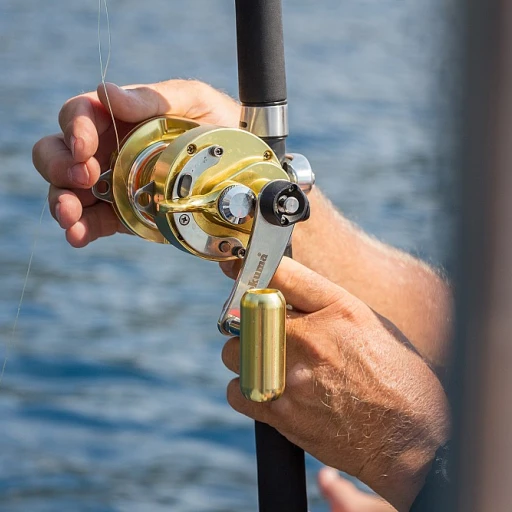
The legendary catch of Kirk Kirkland
The tale of kirk kirkland and the world record gar
Few fishing stories captivate the imagination quite like the legendary catch by Kirk Kirkland. Known for his passion and expertise in angling, Kirkland made headlines when he reeled in a world record alligator gar. This unforgettable moment didn't just happen overnight; it took years of dedication, countless hours on the waters, and a knack for understanding this elusive species.
Back in 2011, on the waters of the Rio Grande River, Kirkland landed a massive alligator gar that tipped the scales at an extraordinary 279 pounds. This impressive catch was not just a stroke of luck but the result of a combination of expert fishing techniques and the right tackle. The gar, scientifically known as Atractosteus spatula, is a freshwater giant known for its sheer strength and elusive nature.
Kirkland's moment of triumph came with the help of his trusted rod and reel, and of course, his unyielding determination. It's a day he often recounts, vividly describing the tugging, the fight, and eventually, the sense of accomplishment that followed.
This world record catch has since been documented and verified by the International Game Fish Association (IGFA), cementing Kirkland's name in the history of angling.
Kirkland's story serves as an inspiration to many anglers around the world, demonstrating what can be achieved with perseverance and skill. Besides, it also highlights the significance of adhering to fishing guidelines and respecting the natural habitats of such magnificent creatures.
For more thrilling captures and the stories behind them, check out this extraordinary tale of the biggest tarpon ever caught.
Understanding the alligator gar
Deciphering the alligator gar
The alligator gar, known scientifically as Atractosteus spatula, is a remarkable freshwater fish species that has captivated anglers for decades. The appearance of this fish is one of its most distinctive characteristics. Sporting a long, cylindrical body covered in armor-like scales and equipped with a long, broad snout full of sharp teeth, it looks more like a creature from the Jurassic era than a resident of modern waterways. It's no wonder these fish have become the stuff of legends, particularly in areas like Texas and the Mississippi River basin.Dr. Kirk Kirkland, a renowned expert on gars, once described the alligator gar as 'an apex predator that commands both fear and respect.'Alligator gars can grow to immense sizes. According to research by Texas Parks and Wildlife Department, these game fish can reach lengths of up to 10 feet and weigh as much as 350 pounds. The sheer size and power of these fish make them a thrilling catch. In one such memorable instance, Kirk Kirkland caught a gar in Sam Rayburn Lake that weighed a staggering 279 pounds, shattering previous records. However, catching such a colossal fish isn't just about strength. Anglers have to employ specialized techniques and gear to successfully catch these giants. Heavy-duty saltwater rods, reels, and braided line are often used. According to the International Game Fish Association (IGFA), the most common setup involves using a 100-pound test line in conjunction with a strong steel leader to prevent the gar from cutting the line with its razor-sharp teeth. The habitats of these fish add another layer of challenge. Alligator gars prefer slow-moving rivers, oxbow lakes, and reservoirs filled with thick vegetation and submerged logs. These conditions provide excellent cover, making them harder to spot and catch. Veteran anglers like Captain Kirkland often navigate these tricky waters with a keen understanding of gar behaviors and habitats. Despite their daunting appearance, alligator gars play a crucial role in their ecosystems. They help control populations of smaller fish and contribute to the balance of aquatic environments. Conservation efforts have been put in place by organizations like Texas Parks and Wildlife to ensure their survival. This includes habitat restoration, monitoring populations, and educating the public about their ecological importance. To put into perspective the cultural significance of alligator gars, one only needs to look at the record catches that have made headlines. Fishing tales of massive alligator gars have been recounted and celebrated, adding to the storied history of these incredible creatures. Bill Valverde's historic catch in the Rio Grande River is often mentioned alongside Kirkland's achievements, showcasing the long-standing allure of this species. For more context on impressive catches, check out our ultimate guide to the biggest catches.
The role of the IGFA in fishing records
How IGFA's rules impact record claims
The International Game Fish Association (IGFA) plays a pivotal role in the world of fishing records. Formed in 1939, the IGFA is the authoritative body that standardizes rules and regulations for record fish catches. Before IGFA, fishing records were often inconsistent, lacking universally agreed-upon standards. Its creation brought much-needed organization, ensuring records are accurate and comparable globally.
Take the world record gar catch by Kirk Kirkland, for example. Kirkland's 279-pound alligator gar caught in Texas was not just a matter of hauling in a massive fish; it had to be validated by the IGFA. The validation process involves several strict criteria, such as ensuring the fish was caught according to IGFA rules, weighing the fish on a certified scale, and verifying the angler's line class. These measures uphold the integrity of fishing records and ensure every achievement is genuinely remarkable.
The role of technology in verification
In recent years, technology has significantly influenced how the IGFA validates record claims. Digital photography, video recordings, and GPS devices allow anglers to provide real-time evidence of their feats, making it easier for the IGFA to verify claims. For instance, when Kirkland caught his legendary gar, he had to submit high-quality photographs and videos showcasing the catch and the environment, as well as the tools he used.
This technological advancement not only speeds up the verification process but also ensures that there's an indisputable trail of evidence. Considering the size and rarity of alligator gars, these records need to meet the highest standards of proof. Advanced technology ensures that no fishy business is involved in these record claims.
Experts weigh in
Experts in the fishing community often emphasize the IGFA's role in maintaining the sport's credibility. As stated by Dr. Jason Schratwieser, IGFA President, "Our mission has always been to inspire, research, educate, and ensure ethical angling practices. The trust placed in us by anglers around the world is something we take very seriously." This sentiment is echoed by many in the angling community who view the IGFA as the gold standard in fishing record validation.
Moreover, avid anglers like Art Weston, who holds multiple records himself, stress the importance of the IGFA's stringent rules. "Catching a record fish is exhilarating, but knowing it meets IGFA's rigorous standards adds a whole new level of achievement," he said.
Controversies and challenges
Despite its authoritative status, the IGFA isn't immune to controversies. Instances occur where anglers dispute decisions or feel their catches weren't given fair consideration due to minor technicalities. For example, some anglers argue over the IGFA's line class rulings or the specifics of hook usage, feeling that the rules sometimes overshadow the fish's significance.
That said, these controversies are few and far between compared to the volume of successful, undisputed record claims. The IGFA continues to evolve its processes, considering community feedback to maintain fairness and transparency in record validations. This commitment to continual improvement ensures that records like the world record gar remain credible and respected within the fishing community.
Fishing techniques for catching giant gars
mastering the techniques for giant gar fishing
To successfully catch a massive alligator gar, it takes more than just luck; it requires a combination of skill, the right equipment, and knowledge of the fish's behavior. The story of Kirk Kirkland and his legendary catch of the world record alligator gar only highlights the importance of these elements.understanding the prey
The alligator gar, or Atractosteus spatula, is one of the largest freshwater fish in North America, known for its torpedo-like body and its ability to breathe both air and water. This unique feature allows them to thrive in diverse environments, from slow-moving rivers to oxbow lakes like Texas's Sam Rayburn Reservoir. Kirkland's boat was specially equipped to navigate these waters, making it easier for him to locate and catch these elusive giants.the right tackle and gear
When targeting such a formidable species, using the right tackle is essential. Heavy-duty fishing gear, including a strong rod and reel combo, is necessary to handle the sheer size and strength of an alligator gar. Kirkland used a 200-pound test line, which is crucial for managing the fight with a fish that can easily surpass 200 pounds. According to the International Game Fish Association (IGFA), precise measurements of equipment and the fish itself play a significant role in certifying world records. Another crucial piece of equipment is the landing net. It's not just about catching the fish but also safely bringing it into the boat. The last thing any angler wants is to lose a record-shattering gar right at the boat's edge.bait and lures
Gars are ambush predators, and they prefer live or cut bait that mimics their natural prey. Common choices include mullet, shad, and carp. Kirkland swears by using fresh bait and often prepares his gear meticulously before a fishing expedition to ensure everything is set for the best chance of success. Artificial lures can also be effective, especially those that replicate the movement of wounded fish.timing and location
Understanding the gar's behavior and habitat is key. They are most active during the warmer months and tend to frequent shallow waters where they can easily hunt. Kirkland often fishes in areas known for their gar population, like Sam Rayburn Lake, and times his trips to coincide with their feeding habits, usually early morning or late evening. Mike Iaconelli, a well-known angler, said, "Catching a giant like the alligator gar requires patience and practice. Understanding their behavior and environment can make all the difference." This insight is echoed by numerous anglers who have successfully caught large gars. For more on fishing techniques, you might enjoy reading this detailed guide on the world record goliath grouper.The significance of Sam Rayburn Lake
Sam rayburn lake: A fisherman's paradise
Sam Rayburn Lake is not just any body of water; it’s a legendary fishing hotspot in Texas known for producing massive catches. Every angler dreams of casting their line here, hoping to reel in a record-breaking fish just like Kirk Kirkland did when he caught his colossal alligator gar.
The lake's unique ecosystem supports a diverse range of fish species, but it's the giant alligator gars that truly steal the show. The perfect combination of water conditions and abundant food supply makes Sam Rayburn Lake an ideal habitat for these freshwater behemoths.
Why sam rayburn lake stands out
One of the factors that set Sam Rayburn Lake apart is its sheer size and depth. Covering over 114,000 acres, this reservoir provides ample space for large fish like the alligator gar to thrive. The lake's varied underwater terrain, with its drop-offs, submerged structures, and vegetation, offers excellent hiding spots for these elusive giants.
Anglers love the challenge of targeting big gars in this lake, and many have success stories that add to the lake’s mystique. For example, Art Weston, another legendary angler, had some of his best catches right here at Sam Rayburn.
Fishing regulations and tips
When planning a fishing trip to Sam Rayburn, it's essential to be aware of the local regulations stipulated by the Texas Parks and Wildlife Department (TPWD). These guidelines ensure sustainable fishing practices and help maintain the lake's ecological balance.
Using heavy-duty tackle and appropriate rods and reels is crucial when targeting alligator gars. Many anglers opt for pound test lines strong enough to withstand the power and size of these monstrous fish. This isn't your typical fishing trip – it demands preparation and patience.
Memorable catches and the significance of records
Over the years, Sam Rayburn Lake has seen its fair share of record-breaking catches. Stories of massive alligator gars caught in these waters are common, and each tale adds to the lake’s legendary status. The thrill of potentially breaking a World Record is a huge draw for fishers from across the globe.
One standout moment was when fisherman Bill Valverde set a record with his incredible gar caught years ago. These moments are not just about the bragging rights – they’re a testament to the lake’s ability to nurture giants.
The community and conservation efforts
Beyond the thrill of the catch, the community around Sam Rayburn Lake is deeply committed to conservation. Efforts like habitat restoration, pollution control, and species monitoring by organizations like the TPWD ensure that future generations can continue to enjoy world-class fishing in this beautiful setting.
The lake remains a beacon of sustainable fishing and environmental stewardship, proving that with conscious efforts, we can preserve these natural wonders for years to come.
Conservation efforts for alligator gars
The importance of protecting alligator gars
Given the impressive history of catches like Kirk Kirkland's record-breaking alligator gar, conservation efforts have become crucial. The Texas Parks and Wildlife Department (TPWD) has been at the forefront, recognizing this species' environmental significance and ensuring they remain a part of our freshwater ecosystems for years to come.
Historically, alligator gars were often viewed as 'trash fish,' with little care given to their survival. However, awareness has shifted greatly due to the efforts of many. The International Game Fish Association (IGFA) and TPWD have collaborated on many initiatives designed to educate anglers and the public on the importance of this ancient species.
Ongoing research and education efforts
Alligator gars, scientifically known as Atractosteus spatula, have garnered attention from biologists and researchers. Studies have shown they are a crucial part of their ecosystems, acting as top predators. Their presence can help control the populations of other species, maintaining a balanced and healthy environment in freshwater habitats.
Many case studies, like those conducted at the Sam Rayburn Lake, demonstrate how proper management and conservation can lead to a thriving population of alligator gars. These studies have highlighted the effectiveness of measures such as the implementation of fishing regulations, habitat protection, and even specific seasons for catch and release fishing. Kirkland, known for his record-breaking catches, has also been an advocate for these practices, often sharing his personal insights and experiences with fellow anglers.
Public education plays a massive role. Organizations like IGFA and TPWD have ramped up their efforts to inform the public about the ecological importance of alligator gars through school programs, community events, and social media campaigns, encouraging a shift in perception from 'monster fish' to valuable freshwater species.
The future of conservation programs
Looking forward, the success of these conservation programs will heavily depend on ongoing support and collaboration from anglers, conservationists, and government agencies. The introduction of advanced technologies, such as satellite tracking and genetic studies, promises to enhance our understanding and management of alligator gar populations.
Furthermore, engaging and enlightening the younger generation of anglers is essential to ensuring the legacy of this unique species. Not only do conservation programs aim to protect alligator gars, but they also work towards creating a sustainable and thriving fishing environment for all freshwater fish species.
In conclusion, the efforts to conserve alligator gars are as impressive as the stories of those who have caught them. With continued dedication and innovative practices, the future looks hopeful for these fascinating giants of our freshwater systems.
Personal stories from record-holding anglers
Kirkland's Personal Stories and Brushes with Fame
It’s hard to talk about Kirk Kirkland without hearing a treasure trove of thrilling tales and unforgettable experiences. Known widely in the fishing community, Kirkland has more than once found himself in the limelight due to his remarkable catches.
Case in point, the legendary catch of the world record gar. Kirkland did not just break records; he smashed them, leaving other anglers in awe. Kirkland's knack for catching monstrous gars is more than just skill; it's an art honed over years of practice and a deep connection with nature.
Memories from the Rio Grande and Beyond
Kirk Kirkland shares some of his favorite memories, including a thrilling chase on the Rio Grande, where he nearly lost his boat to an enormous gar. As he recalls, the gar pulled with such force that Kirkland had to scramble to keep his equipment from going overboard. This was not just any catch; it was a testament to his determination and expertise.
Additionally, Kirkland recounted fishing trips in Texas, particularly around Sam Rayburn Lake, a hotspot for alligator gars. It’s tales like these that underline why dedicated anglers consider Kirkland a mentor and inspiration—a role model in the big game fish community.
Alligator Gar Encounters Across the States
From the muddy waters of Mississippi to the expansive reservoirs of Texas, Kirkland’s stories offer a rich tapestry of adventures. His captures are immortalized in the pages of the International Game Fish Association's records, and for good reason. Imagine fishing in Lake Chotard, Wisconsin, or even the Rio Grande River in flowery Florida; each region brings its own unique set of challenges and rewards.
Kirkland's resumes are packed with notable sightings and captures, including the massive alligator gar in Mississippi. Often, the headline screams truth: Kirkland wrote Facebook posts that have gone viral, showcasing his latest triumphs. With a profound knack for luring in these giants, he makes it look almost too easy.
Tales That Spark Conservation Efforts
The fascination with these monstrous gars has also led to increased awareness about the importance of their conservation. Texas Parks Wildlife, along with organizations like the IGFA, have taken major steps to ensure these fish can thrive for generations.
Personalities like Kirkland have a pivotal role to play here; their adventures don’t just entertain but inspire new conservation measures, helping educate the public about the threats and preservation of alligator gars.
A Continuing Legacy
As the legend grows, so do the stories. Each trip, every catch, adds to the myth and the real-life legacy of Kirkland. The reverence for his skills and experiences ensures that the alligator gar remains a cherished part of fishing heritage.
Kirkland’s brushes with these giants aren’t just moments in time; they’re historical threads weaving through the very fabric of the angler community.

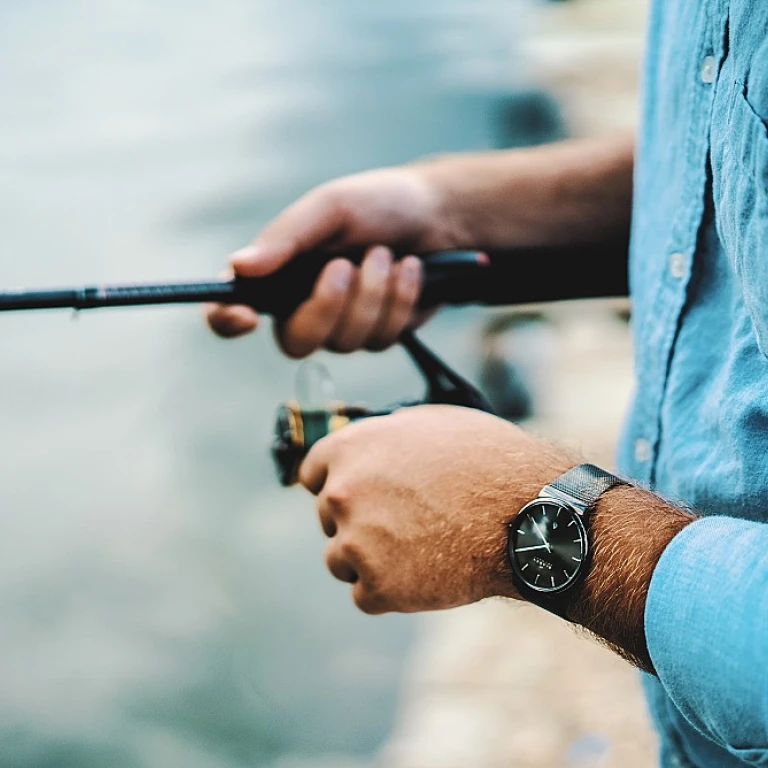


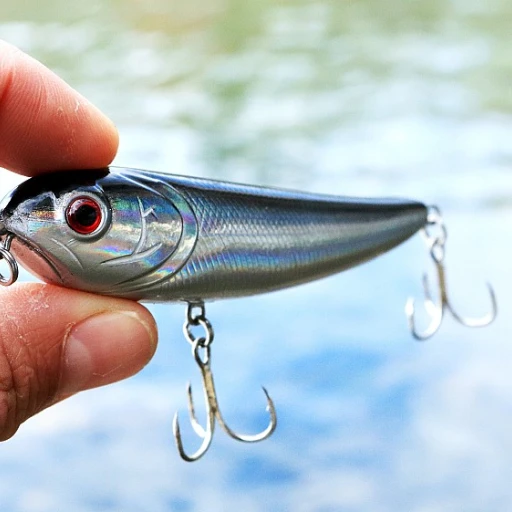
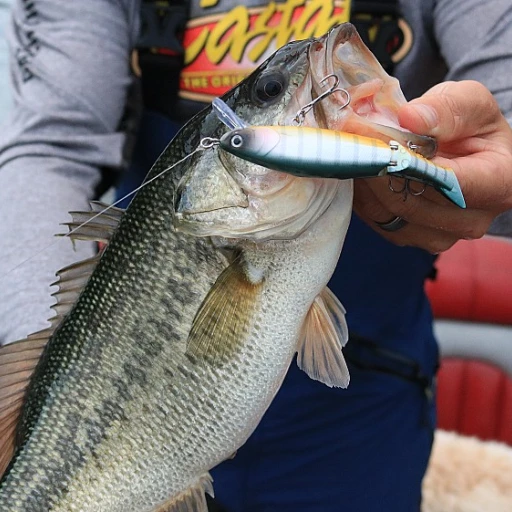
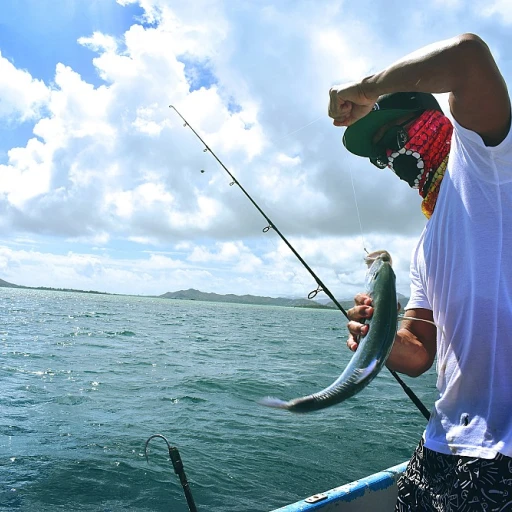
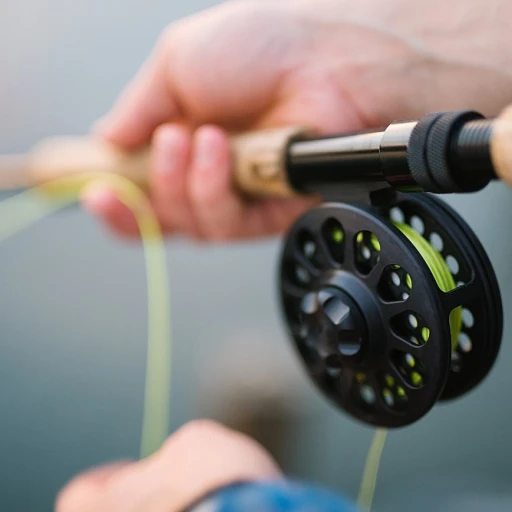
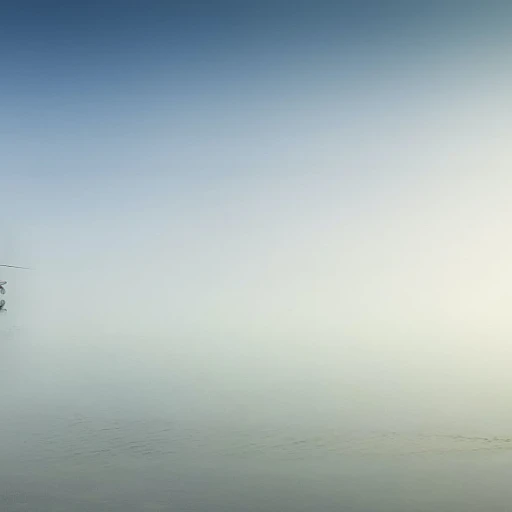
-large-teaser.webp)
